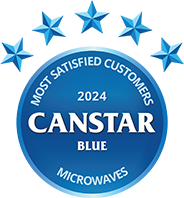Our review compares microwaves on customer satisfaction, so you can find out what other Aussies think about the compared brands before you go ahead with a purchase. Think of it as like asking hundreds of your closest mates which microwave they think is best!
Canstar Blue surveyed 857 Australians for their feedback on the new microwave(s) they’ve purchased and used in the last three years.
The winning brand is the one that receives the highest overall satisfaction rating once all the scores from the overall satisfaction criteria are combined and averaged.
Find more detailed information on our Most Satisfied Customer methodology.
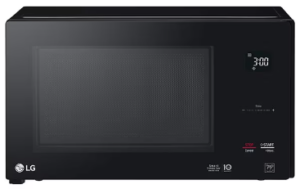
LG was rated five stars for durability, performance, design, features and functionality, ease of use, ease of cleaning and overall satisfaction. It scored four stars for value for money.
LG offers an extensive range of microwave ovens at multiple price points. Its NeoChef Smart Inverter microwaves are typically equipped with easy-touch controls, tempered glass doors, anti-bacterial interior coating and fast cooking options. The inverter technology enables more precise temperature control and even heat distribution. LG’s microwaves range in capacity from 23L to 56L.
Shop online now
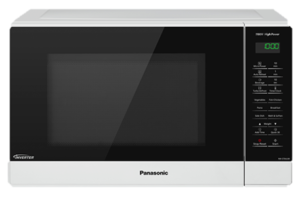
Panasonic was rated five stars for durability and features and functionality. It scored four stars for value for money, performance, design, ease of use, ease of cleaning and overall satisfaction.
Panasonic offers a range of convection, inverter and flatbed microwave models. Many Panasonic microwaves are equipped with LED illumination, 30- second cooking functions and a turbo defrost mode. Its models range in capacity from 20L to 44L.
Shop online now
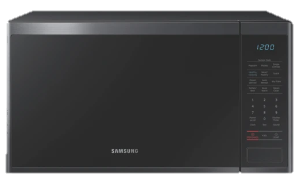
Samsung scored five stars for durability. It was rated four stars for value for money, performance, design, features and functionality, ease of use, ease of cleaning and overall satisfaction.
Samsung offers several microwaves with white, stainless-steel and mirror finishes. Most models feature humidity sensors, pre-set cooking modes, scratch-resistant ceramic interiors and energy-saving modes. Some models also have SmartSensor technology that sets an optimal cooking time and power.
Shop online now
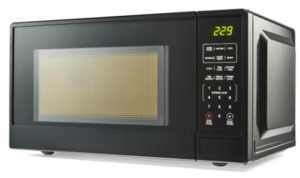
Anko scored five stars for value for money. It received four-star ratings for durability, performance, design, features and functionality, ease of use, ease of cleaning and overall satisfaction.
Kmart’s Anko brand offers a small line of microwaves at more affordable prices . Many models feature auto-cooking menus, child safety locks, multiple power levels, clock functions and the ability to defrost by weight or time. Anko microwaves come white, black and silver colour options .
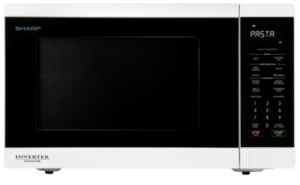
Sharp scored four stars in every category: durability, value for money, performance, design, features and functionality, ease of use, ease of cleaning and overall satisfaction.
Sharp offers an extensive line of microwaves in three sizes: compact, mid-size and large. Most Sharp microwaves feature a stainless-steel exterior, favourite cooking modes, LED display, child locks, smart auto-menus and capability to extend cooking times. Sharp stocks multiple types of microwaves, with flatbed, inverter and commercial options available.
Shop online now
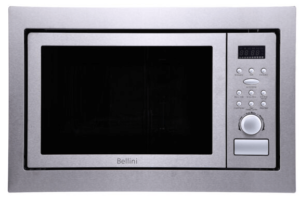
Bellini was rated four stars for value for money, performance, features and functionality and ease of cleaning. It scored three stars for durability, design, ease of use and overall satisfaction.
Bellini has a small range of microwave ovens with stainless-steel or black exteriors. Its models commonly feature electronic control panels, glass turntables and child locks. Bellini’s 25L Digital model has a grill feature to add functionality and improve cooking times.
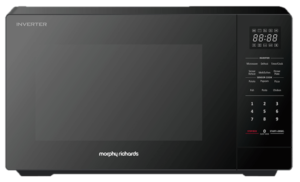
Morphy Richards was rated four stars for durability, value for money, ease of use and ease of cleaning. It scored three stars for performance, design, features and functionality and overall satisfaction.
The Morphy Richards microwave range features several models, with black or white colour options available. It offers a 20L model and larger 34L microwaves that have grill and convection cooking capability. Most models have inverter technology, smart defrost presets and automatic programs for express cooking.
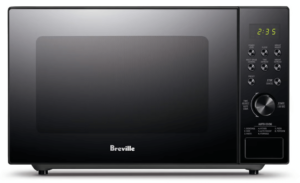
Breville was rated four stars for durability, performance, design and features and functionality. It scored three stars for value for money, ease of use, ease of cleaning and overall satisfaction.
Breville has a small range of microwaves, each featuring an easy- clean stainless-steel design. Most models have space-saving flatbed interiors, favourite settings and instant start shortcuts. Breville’s Combi Wave model can be used as an air fryer, convection oven and traditional microwave.
Shop online now
Not all brands in the market qualify for our ratings (based on minimum survey sample size), but that doesn’t mean they’re not worth considering. Here are several more brands to check out before making a purchase decision.
Here are the past winners of Canstar Blue’s microwave ratings:

Appliances - July 23rd
Dyson is venturing further into the world of audio technology, announcing the upcoming release of its OnTrac headphones. The customisable headphones boast a 55-hour battery life, which is one of the best on the market, …
– Read more
Appliances - July 17th
Canstar Blue has calculated and compared the average kWh price of electricity in NSW, QLD, VIC and SA. See how your state compares.
– Read more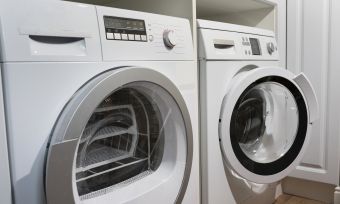
Appliances - July 8th
Having a clothes dryer at home is undoubtedly convenient but with electricity prices rising around the country it pays to know how much your dryer is costing you to run and whether or not you …
– Read more
Appliances - July 1st
Moving house? Canstar Blue explains how to connect electricity and gas to the new property and how to transfer your energy account.
– Read more
Appliances - June 26th
Keeping your fridge and freezer at the right temperature ensures your food is safe to eat. Find out more with Canstar Blue.
– Read more^By clicking on a shop online, compare now, buy online, more details, go to site or check latest prices button, you may leave Canstar Blue and be taken to a referral partner to compare. Canstar Blue may be paid for this referral. You agree that Canstar Blue’s terms and conditions apply to this referral. If you click on a brand that is not a referral partner, you will be taken to a brand page on Canstar Blue.
Canstar Blue may earn a fee for referrals from its website tables, and from sponsorship of certain products. Fees payable by product providers for referrals and sponsorship may vary between providers. Generally, sponsorship fees are payable in addition to referral fees. Sponsored products are clearly disclosed as such on website pages. They may appear in a number of areas of the website such as in comparison tables, on hub pages and in articles. Sponsored products may be displayed in a fixed position in a table, regardless of the product's rating, price or other attributes. The table position of a Sponsored product does not indicate any ranking or rating by Canstar. The table position of a Sponsored product does not change when a consumer changes the sort order of the table. For more information please see How Are We Funded.
*Prices correct as of publication date.
